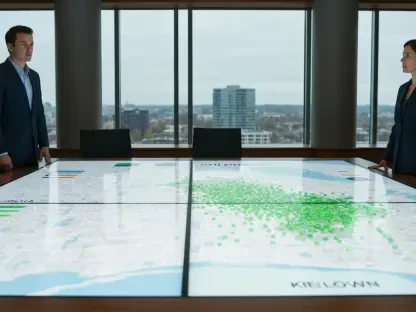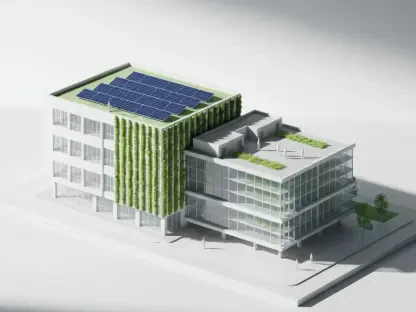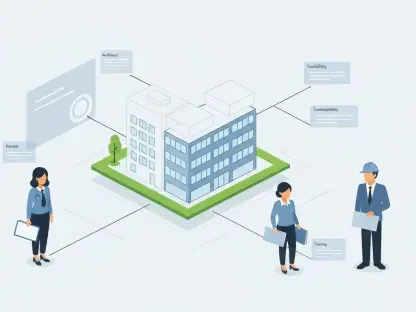Home protection plans are marketed as safety nets for homeowners, promising to cover a wide array of unexpected damages. These plans often appear comprehensive at first glance, reassuring individuals of financial coverage for incidents like storm damage or electrical failures. However, the complexities inherent in these agreements can lead to unexpected challenges. The experience of Mike Whitsitt in Springfield, Missouri, serves as a telling example. Following a severe storm that toppled a tree over a power line leading to his home, Whitsitt discovered that his coverage wasn’t as robust as assumed. This incident emphasizes the importance of understanding policy details and highlights the potential pitfalls of depending solely on such plans for home security.
Understanding the Fine Print
Details Matter: How Hidden Terms Affect Coverage
Plans like Exterior Electrical Plus from HomeServe appear attractive due to their promise of coverage for incidents such as damages caused by fallen trees, up to a certain limit. However, these plans usually include a list of exclusions that can significantly limit their usefulness. Whitsitt’s case reveals how these exclusions can nullify coverage unexpectedly. Although his plan initially seemed to provide the necessary protection, it ultimately denied the claim due to pre-existing, non-code-compliant electrical installations. HomeServe’s technician’s discovery of these violations pointed to exclusion number nine, which stipulates non-coverage for systems that do not meet national electrical codes.
It becomes crucial for homeowners to meticulously examine contract details before an incident occurs. Often, significant exclusions are not as prominently displayed as the coverage promises, leaving homeowners like Whitsitt blindsided when a claim is processed. Furthermore, verifying that a property’s electrical systems are compliant with the national electrical codes before purchasing additional coverage is an essential step in ensuring that they are not inadvertently excluded from coverage. These steps are often overlooked in the excitement of acquiring perceived protection but are vital to avoiding costly surprises.
The Impact of Non-Compliance
Discovering that certain preconditions can void coverage, as seen in Whitsitt’s experience, reveals the critical need for compliance with building codes. In this scenario, Whitsitt was unaware that a recent home addition had incorporated electrical systems that violated such codes, undermining his plan and negating its advantages. The revelation was a stark reminder that plans are issued with the assumption of compliance with all relevant safety and quality standards. This assumption shifts the burden of verification onto the homeowner, further complicating the protection landscape.
Unfortunately, discovering such discrepancies after a damaging event can lead to unexpected financial burdens. Whitsitt’s eventual partial compensation from HomeServe to bring wiring up to code, although unexpected, was not forthcoming as a standard practice, leaving significant costs uncovered. Such scenarios highlight an often-overlooked aspect of ensuring property compliance not only for safety but as a financial safeguard. While plans hold the promise of peace of mind, their backing may falter without compliance, underscoring the importance of regular system evaluations.
Exploring Options and Mitigating Risks
Leveraging Additional Resources
When faced with denied claims, homeowners must swiftly explore other avenues for reparation. In Whitsitt’s situation, maximizing benefits from existing homeowners’ insurance became the immediate course of action. Standard home insurance policies often encompass broader coverage scenarios than specialized protection plans and can serve as a crucial backup. Contacting the insurance provider promptly facilitates swift identification of coverage overlaps and additional support structures. It is crucial to keep in mind that while protection plans serve as valuable supplements, they should not completely replace standard insurance policies, given their potential for stringent limitations.
Additionally, staying informed about energy companies’ roles can be beneficial. Many utility providers offer customers options for repairs and maintenance, sometimes including them as value-added services within monthly bills. The potential for such services to address damages not covered under typical home protection plans should not be ignored. This approach not only diversifies potential support channels but also potentially reduces the financial strain in emergency situations.
The Path Forward for Homeowners
Taking a proactive approach in understanding and maintaining home systems is imperative. Regularly updating knowledge of policy changes and exclusions can prevent unforeseen financial disputes. Homeowners are encouraged to engage with professional inspectors to ensure their properties comply with current standards, thereby aligning coverage potential with policy promises. Where lapses are discovered, addressing them immediately outside of an emergency context translates into smoother processes should coverage become necessary.
Exploring the factors influencing home protection plans’ effectiveness offers homeowners insight into preparedness and risk management. An informed approach not only enhances coverage reliability but also empowers decisions regarding property investments, aligning expectations with real-world scenarios. Moving forward, the integration of comprehensive compliance checks and detailed policy reviews can increase a plan’s efficacy and instill the confidence homeowners seek in safeguarding their property.
Looking Forward: Navigating the Complexities
Home protection plans are often presented as essential safety nets for homeowners, assuring them of coverage for a broad range of unforeseen damages. At first glance, these plans seem all-encompassing, giving homeowners peace of mind by promising financial protection for unexpected occurrences such as storm damage or electrical failures. Yet, the intricate details contained within these agreements can sometimes pose unexpected challenges. Mike Whitsitt’s experience in Springfield, Missouri, serves as a cautionary tale. When a severe storm caused a tree to collapse onto a power line leading to his home, Whitsitt was unpleasantly surprised to find his coverage wasn’t as comprehensive as he thought. This incident underscores the critical importance of thoroughly understanding the specifics of your policy and highlights the risks of relying solely on such plans for home security. It suggests homeowners should not only scrutinize their protection plans in detail but also consider additional safety measures to ensure full peace of mind.









